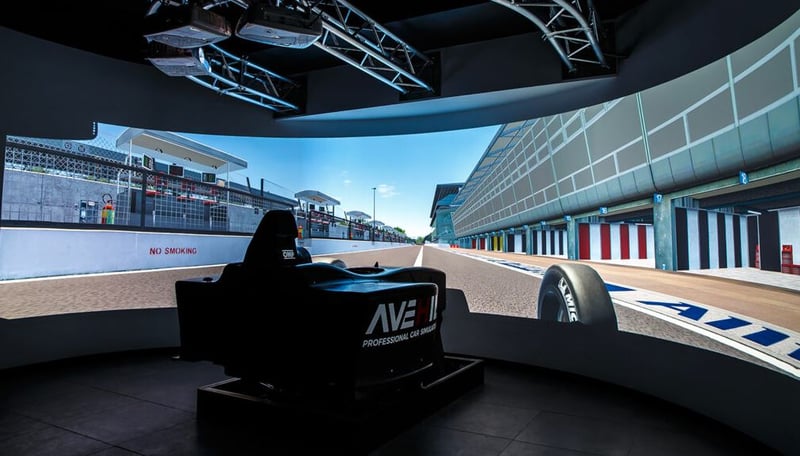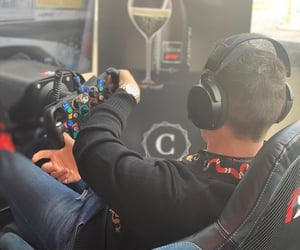How haptics help Skydrive to help drivers
With clients of all different types and levels—from F4, F3, FRECA, GT classes to racing teams as a whole—Skydrive required a simulation system that would be efficient for all levels and driving classes.
Giardina found that having simulators with D-BOX’s haptic movements and vibrations integrated in them was one of the best ways to ensure that their product could cater to every level of driver, and be a smart simulator to use in their Driver R&D program. Regardless of the skill level of a driver, the data obtained from haptic simulators allows Skydrive to hone the smallest of details and in turn to fine-tune the driving techniques of his students!
However, there are 3 additional reasons why Giardina considers his D-BOX simulators to be crucial to his business’ (and his students’) success.
“First, it’s because it’s plug and play,” explained Giardina. This means that regardless of the type of driver the simulator is being used for, it’s extremely simple to set up.
“Second, because it’s reliable, and third, it’s because the algorithms are good for cueing,” he added.
He also went on to say in our interview with him that D-BOX’s incredible support team plays a huge role in his and his students’ success!
The advantage of haptics
In the high-performance world of motorsport, every second and every little detail behind the wheel can be the difference between a successful race or a finish at the bottom of the standings. The costs associated with training behind the wheel of a real vehicle are also exponential, which makes haptic technology a cost-effective solution for drivers to use!
As Giardina has mentioned, not only are D-BOX’s haptic systems cost effective, but they’re easy to integrate into every chassis, they deliver realistic experiences to drivers—by allowing them to truly feel the smallest changes in road texture, for example. The system comes with embedded algorithms that make the experience as sensory as can be, meaning that drivers are fully tuned in to their vehicles. He also added that D-BOX’s haptic system lasts an extremely long time, adding to the cost-effectiveness of the solution!
“Our system now, is from 2018 so it’s now the 4th year we use it,” explained Giardina. “Some days we use it for 9 hours per day non-stop and it’s okay. That’s why it’s my best option,” he said.
Another benefit of haptic simulators is that drivers can re-create the same segment or part of a track that’s giving them trouble hundreds or thousands of times over, until they get it right and master the necessary skill. By being able to re-create the troubled areas of a course, it allows Giardina to further analyse a drivers’ techniques and implement any changes if need be!
When 2 specialties come together
By combining Skydrive’s AVEHIL—which merges the dynamic flow of the specific car model with a multitude of digital signals such as image generations, motion and haptic cues—with D-BOX’s high-fidelity haptic systems, there’s no limiting what drivers can accomplish.
“Simulators for professionals are the best way to do things that can’t be done in reality,” said Giardina. “[You can] even test specific setups that can be dangerous, safely. You can reproduce particular parts of circuits to make the driver go through it so many times, until they understand what they have to do,” he explained. “This is what makes D-BOX simulators worth it.”
AVEHIL & D-BOX: A reference in the field of motorsport
Skydrive’s high-end simulators and D-BOX’s high-fidelity haptic technology work in tandem to lower training costs, while increasing training efficiency. This is what makes them a reference in the field of motorsport.
In no other fashion can a professional driver re-race the same circuit and circumstances endlessly until each required skill is mastered, than in programs like Skydrive’s R&D driver program which uses AVEHIL simulators to help them perfect their craft!
If you would like to learn how haptic technology can drive your business as it does Skydrive’s, feel free to contact us today.




